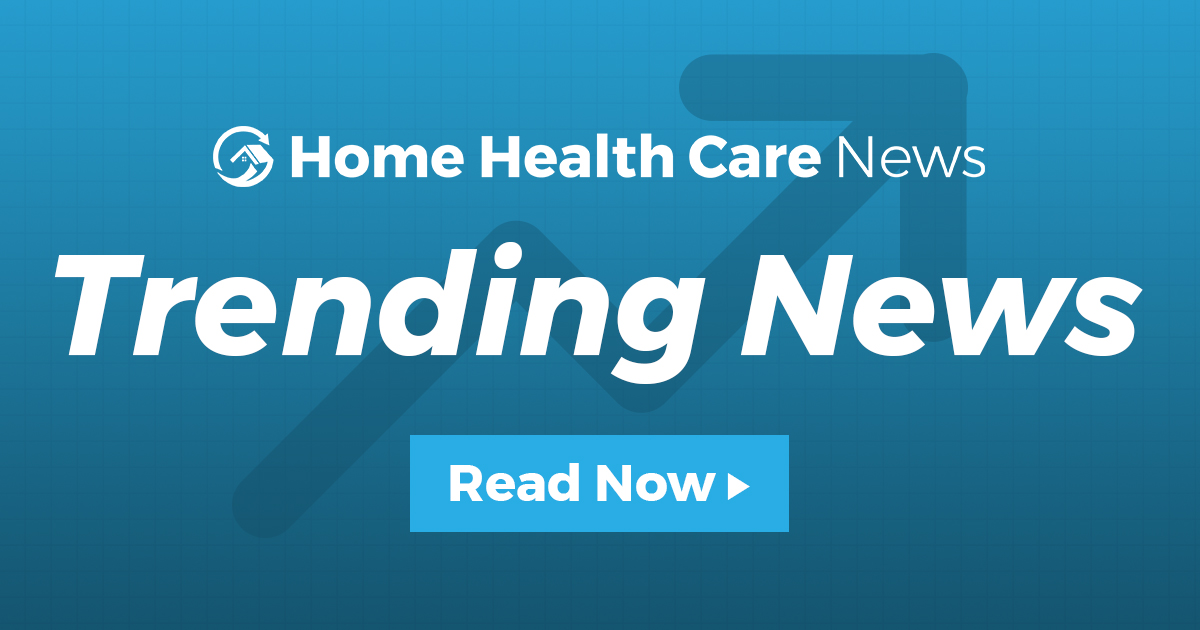
The Biden administration’s Build Back Better plan – which includes an array of support for home-based care and senior services – took a significant step Friday.
A $1.9 trillion bill got the necessary amount of votes to make it through the U.S. House of Representatives. The next stop will be the Senate.
“Today’s historic vote of support for home care comes at a time when the country needs it more than ever,” National Association for Home Care & Hospice (NAHC) President William A. Dombi said in a statement shared with Home Health Care News. “Health care at home is widely recognized as high value, high quality and highly preferred.”
Most notably, $150 billion will be dedicated to reducing waiting lists for in-home care services and improving pay for low-wage in-home care professionals.
But the Build Back Better plan will also include $150 billion to increase the supply of affordable housing, $130 billion to provide tax credits for uninsured people in states that have not expanded Medicaid benefits, $1 billion for direct care workforce competitive grants, and $20 million for hospice and palliative nursing programs.
“From pediatric nursing care to home care aide services for those with multiple chronic illnesses as they age, this legislation will provide improved access to home care,” Dombi said. “We now look to the Senate to complete the work to protect our families and friends who need this essential care.”
Originally, the plan included $400 billion for home- and community-based services (HCBS), but it was eventually trimmed as Democrats and Republicans bargained for their respective side’s wishes.
Even the lesser version won’t be a shoe-in to get through the Senate, though advocates are arguing relentlessly on its behalf. The Senate is expected to consider the bill in the coming weeks, with the hope that a decision will be made before Christmas.
“Today’s vote is a major step forward for millions of older Americans … stuck on waiting lists to rent a place they can afford, and unable to get the home health and other help they and their families need,” Katie Smith Sloan, the president and CEO of LeadingAge, said in a statement. “It’s also an overdue step toward alleviating workforce shortages that are denying critical services and support to millions of older adults.”
While the funding would help on the recruiting and retention front by improving wages, it would also likely give hundreds of thousands more Americans access to home-based care.
“Support for home- and community-based services and affordable senior housing programs in the Build Back Better legislation can fundamentally transform how people grow old in this country,” Sloan continued. “These are critically needed resources – especially the investments in the workforce – that will immediately help alleviate current shortages and scarcity across aging services.”
The investment in workers, particularly, has drawn praise from organizations across the country that represent caregivers and other home-based care professionals.
Recommended HHCN+ Exclusives
Ai-jen Poo, the executive director of the National Domestic Workers Alliance (NDWA) and Caring Across Generations, remarked that this was a step toward “the care and infrastructure our families and economy need.”
“Today’s vote brings us one step closer to realizing a future where America’s home care workers … receive a family-sustaining wage,” Poo said in a statement. “And those who need care … will be able to receive quality, affordable care services at home. The Senate’s quick passage of this historic legislation with all three pillars of the care economy – including home- and community-based services, child care and paid family medical leave – will enable us to start building the care infrastructure our families and economy need.”
The plan would be building on other legislative moves made to support in-home care since the onset of the COVID-19 pandemic. The passage of another $1.9 trillion stimulus bill, the American Rescue Plan set the stage for Build Back Better after it made a 10 percentage point increase to HCBS funding through the Federal Medicaid Assistance Percentage (FMAP) match.
An example of how those funds were used surfaced earlier this week in Florida, as the state used that hike to invest $1.1 billion to support HCBS for Floridians. Of that $1.1 billion, more than $669 million will go toward directly addressing HCBS providers’ ongoing workforce challenges and more than $128 million will go toward enhancing services for older adults.
As of Oct. 21, two dozen states had received approval to use increased FMAP funds to increase HCBS provider payment rates. Another 20 or so used it to offer special bonus payments to workers.
“Florida will invest the enhanced funding to allow Florida health care providers to recruit and retain staff to care for the most vulnerable and bolster the ability of Floridians to receive care in a community-based setting,” a statement from the state’s Agency Health Care Administration (AHCA) read. “HCBS programs serve the state’s aging population, as well as individuals with physical, intellectual and developmental disabilities.”

